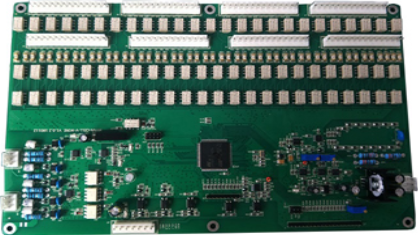1. In PCB design, if the emulator uses one power supply and the PCB board uses one power supply, should the grounds of the two power supplies be connected together?
If you can use a separate power supply, of course, it is better, because it is not easy to cause interference between power supplies, but most devices have specific requirements. Since the emulator and the PCB board use two power supplies, in my opinion, they should not be grounded together.
2. How to check whether the PCB meets the design process requirements before leaving the factory?
Many PCB manufacturers have to go through a power-on network continuity test before the PCB processing is completed to ensure that all connections are correct. At the same time, more and more manufacturers are also using x-ray testing to check some failures during etching or lamination.
For finished boards after patch processing, ICT testing is generally used, which requires ICT test points to be added during PCB design. If there is a problem, you can also use a special X-ray inspection equipment to rule out whether the processing causes the fault.
3. On a 12-layer PCB board, there are three power layers 2.2v, 3.3v, and 5v. How to deal with the ground wire when the three power supplies are made on one layer?
Generally speaking, the three power supplies are built on the third layer, which is better for signal quality. Because it is unlikely that the signal will be split across the plane layer. Cross-segmentation is a key factor affecting signal quality, and simulation software generally ignores it.
For the power layer and the ground layer, it is equivalent to the high-frequency signal. In practice, in addition to considering the signal quality, power plane coupling (using adjacent ground planes to reduce the power plane AC impedance), stacking symmetry, are all factors that need to be considered.
4. How to avoid crosstalk in PCB design?

A changed signal (such as a step signal) propagates along the transmission line from A to B. A coupled signal will be generated on the transmission line CD. Once the changed signal ends, that is, when the signal returns to a stable DC level, the coupled signal will not exist, so crosstalk It only occurs in the process of signal transitions, and the faster the signal edge changes (conversion rate), the greater the crosstalk generated. The electromagnetic field coupled in the space can be extracted as a collection of countless coupling capacitors and coupling inductances. The crosstalk signal generated by the coupling capacitor can be divided into forward crosstalk and reverse crosstalk Sc on the victim network. These two signals have the same polarity; The crosstalk signal generated by the inductance is also divided into forward crosstalk and reverse crosstalk SL, and these two signals have opposite polarities. The forward crosstalk and reverse crosstalk generated by the coupled inductance and capacitance exist at the same time and are almost equal in size. In this way, the forward crosstalk signals on the victim network cancel each other due to the opposite polarity, and the reverse crosstalk polarity is the same, and the superposition is enhanced.
The modes of crosstalk analysis usually include default mode, three-state mode and worst-case mode analysis. The default mode is similar to the way we actually test the crosstalk, that is, the offending network driver is driven by a flip signal, and the victim network driver maintains the initial state (high level or low level), and then the crosstalk value is calculated. This method is more effective for crosstalk analysis of unidirectional signals. The tri-state mode means that the driver of the offending network is driven by a flip signal, and the tri-state terminal of the victim network is set to a high-impedance state to detect the size of the crosstalk. This method is more effective for two-way or complex topology networks. The worst-case analysis refers to keeping the driver of the victim network in the initial state, and the simulator calculates the sum of the crosstalk of all the default infringement networks to each victim network. This method generally only analyzes individual key networks, because there are too many combinations to be calculated and the simulation speed is relatively slow.
5. Is "the protection of the organization" the protection of the case?
Yes. The cabinet should be as tight as possible, use less or no conductive materials, and be grounded as much as possible.
6. A circuit consists of several PCB boards, should they share the same ground?
A circuit is composed of several PCBs, most of which require a common ground, because it is not practical to use several power supplies in a circuit after all. But if you have specific conditions, you can use a different power supply, of course, the interference will be less.